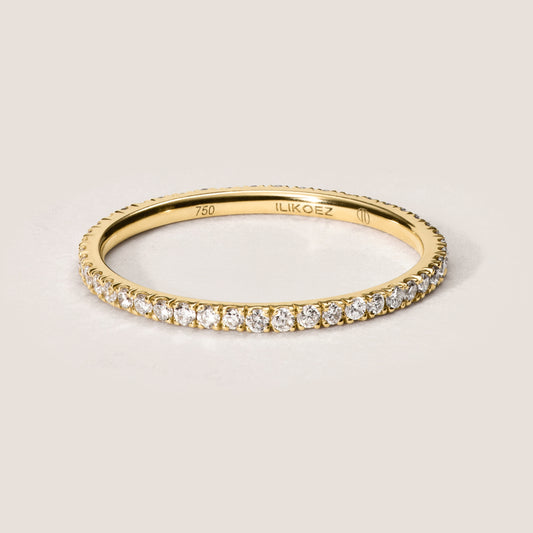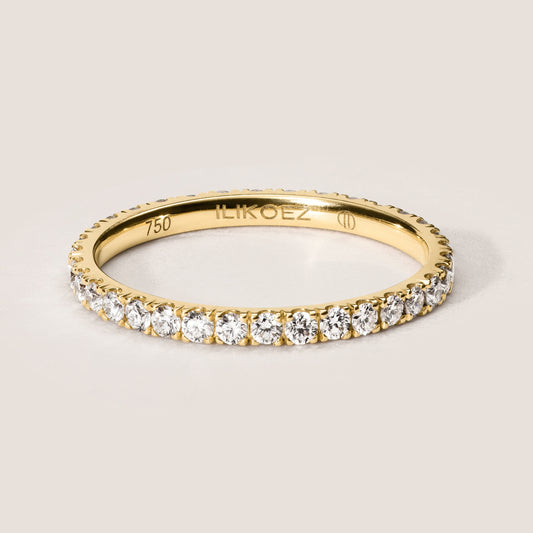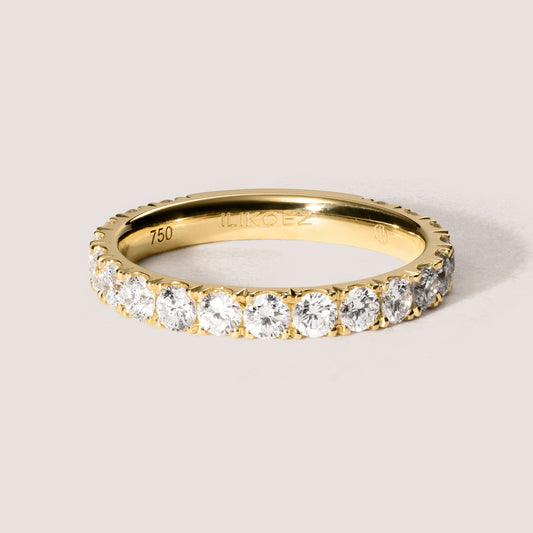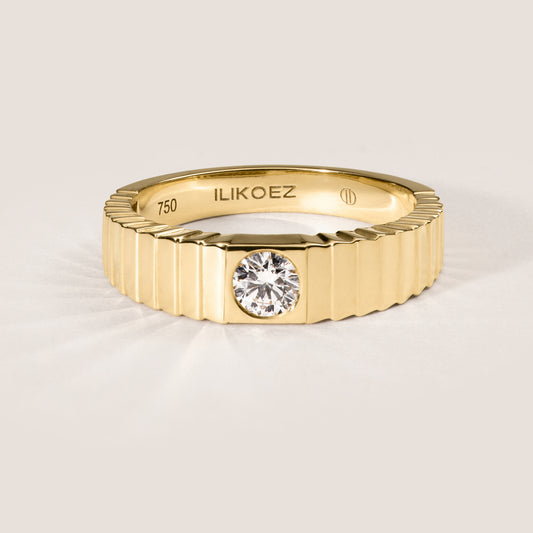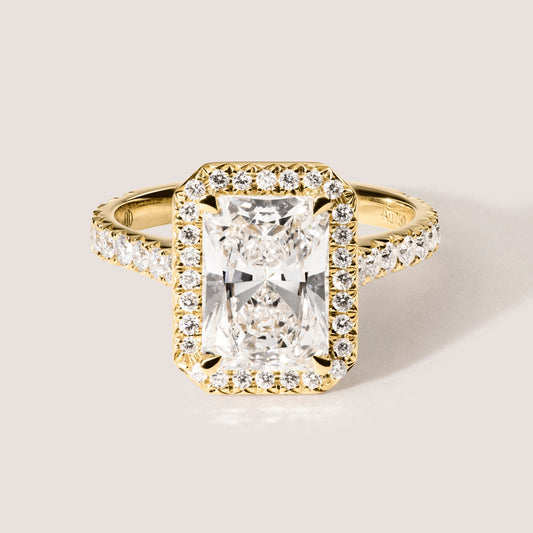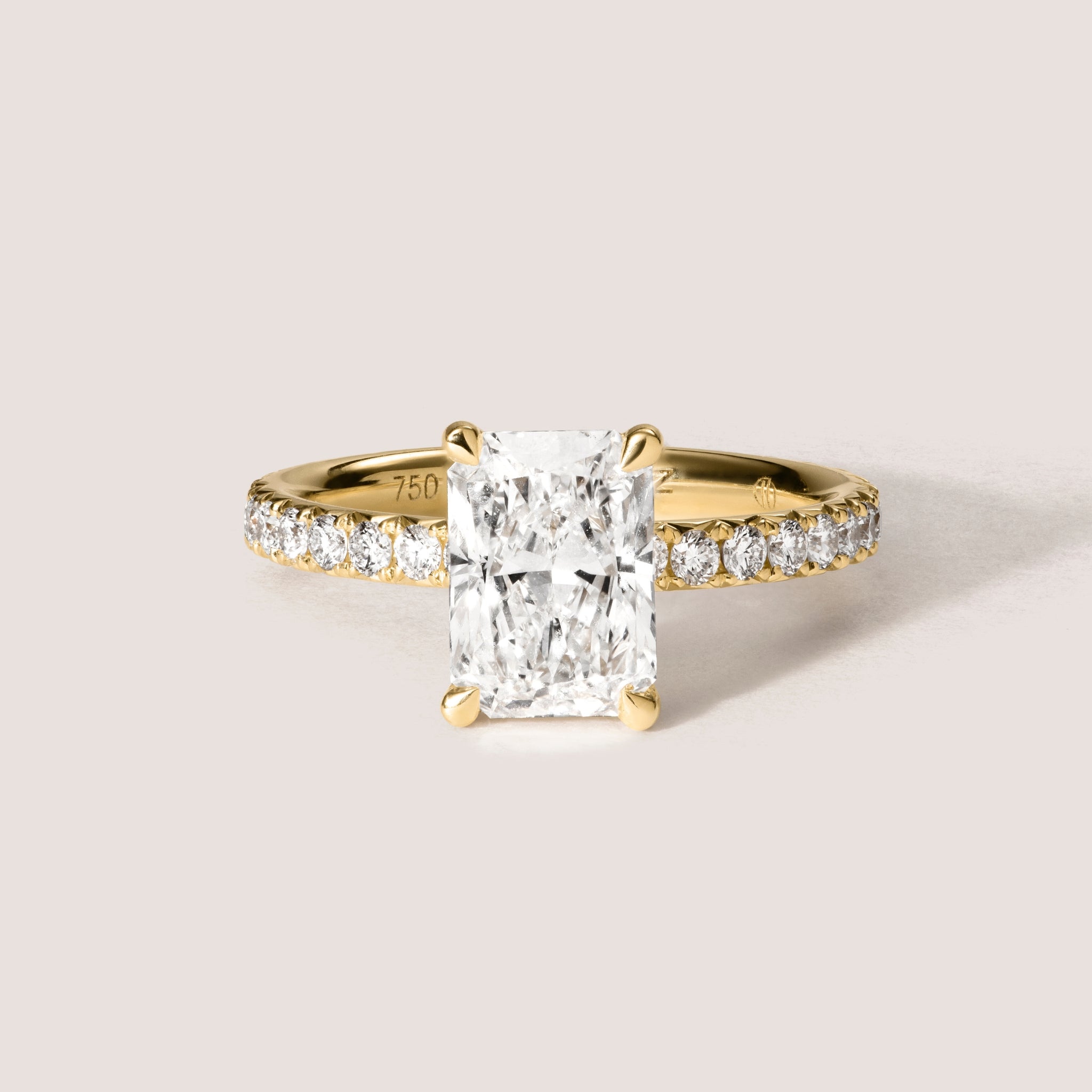
How expensive should an engagement ring be?
Myths, trends and new possibilities with lab-grown diamonds
The question of all questions is often directly followed by a second one:
How expensive should an engagement ring actually be?
Collapsible content
Short answer: In Germany, many couples spend around €1,000–€3,000 on engagement rings. Lab-grown diamonds now make larger and higher-quality stones possible within the same budget. Ultimately, however, it's not the carat value alone that counts, but the interplay of design, material, and, above all , precise, authentic craftsmanship!
Engagement ring costs according to the 2-3 month rule
The well-known "2-3 months' salary" rule originates from a 20th-century diamond industry marketing campaign. It was designed to encourage men to spend a fixed percentage of their income on a ring—as a supposed token of love. This rule persists in the US, while Europe takes a more relaxed view.
Couples want individuality, sustainability and financial freedom instead of rigid rules.
How much does an engagement ring cost in Germany?
In Germany, couples invest an average of €1,000 to €3,000 in an engagement ring. Of course, there are exceptions – from minimalist gold rings to statement solitaires. The key is that the ring should reflect your story and values.
Lab diamonds are no longer a trend
Almost every second engagement ring sold in the USA already consists of a lab-grown diamond.
The stones are readily available and more attractively priced – without having to compromise on size and quality. This puts the spotlight on what truly distinguishes them: the craftsmanship .
Whether a ring is mass-produced or crafted with care and precision determines its quality and longevity.
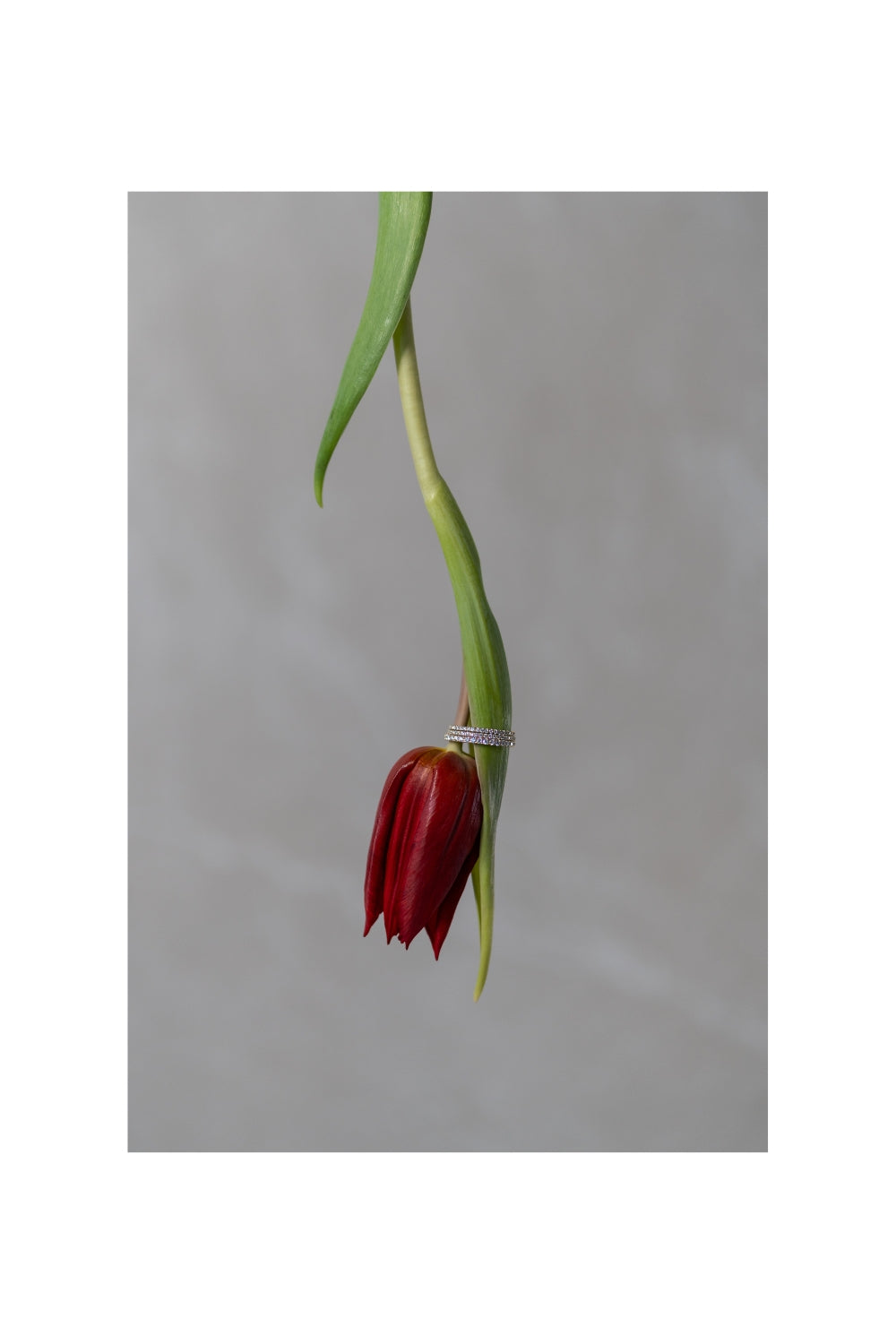
Lab diamonds are changing the market: More carats for your budget
Add tagline
With the rise of lab-grown diamonds, the game has changed fundamentally.
The advantages at a glance:
- Bigger stones for the money : A 1.5-carat lab diamond often costs as much as a 0.7-carat natural diamond.
- More quality : Higher purity & brilliance possible without breaking the budget.
- More responsibility : Sustainable, transparent, without the downsides of mining.
This means that more and more couples are willing to spend more – not because they have to, but because they visibly get more in return.
LUXURY WITH A CLEAR CONSCIENCE
It used to be the case that anyone who wanted “luxury” had to dig deep into their pockets.
Today, the following applies: If you combine responsibility and beauty, you get sustainable jewelry – luxury without a guilty conscience .
A sustainable, handcrafted ring with a lab-grown diamond is not only more affordable but also makes a clear statement:
For responsibility and values that last.
Many couples choose a memoire ring like our Eternity rings as an engagement ring or stacking ring
-
ETERNITY RING - PETITE
Regular price From €663,87 EURRegular priceUnit price / per -
ETERNITY RING - GRANDE
Regular price From €831,93 EURRegular priceUnit price / per -
ETERNITY RING - GRANDE
Regular price From €1.336,13 EURRegular priceUnit price / per
What really matters:
An engagement ring is more than just a piece of jewelry – it is a symbol of love, partnership and the future.
Ask yourself:
- Does the ring fit us and our story?
- Does it have a personal meaning?
- Does it feel right when it's on your finger?
Because in the end it’s all about the emotion and the story behind it!
Responsibility & a clear conscience: the true luxury
The focus on genuine craftsmanship is growing – and with it the demand for fair working conditions and ethical materials.
Responsibility is not the opposite of luxury, but its foundation.
That’s why we at ILIKOEZ rely on:
- 18-carat recycled gold instead of environmentally harmful mining.
- Certified lab-grown diamonds instead of questionable origins.
- Genuine handcraft in Portugal , individually for each pair.
If so, then with responsibility and a clear conscience.
Whether 1,000 or 10,000 euros – the important thing is that the ring reflects the love story and can be worn with pride.
Learn more about OUR PROMISE and SUSTAINABILITY at ILIKOEZ.
DISCOVER OUR HANDCRAFTED ENGAGEMENT RINGS WITH LAB DIAMONDS NOW
individual, ethical and unique like your love.
-
ETERNITY RING - GRANDE
Regular price From €831,93 EURRegular priceUnit price / per -
ETERNITY RING - PETITE
Regular price From €663,87 EURRegular priceUnit price / per -
ATTITUDE DIAMOND RING
Regular price From €1.470,59 EURRegular priceUnit price / per -
LEO engagement ring
Regular price From €2.983,19 EURRegular priceUnit price / per
Conclusion: How expensive should an engagement ring be?
The question is no longer “How much should an engagement ring cost?”
But rather: What values should it embody?
With lab-grown diamonds, larger stones, higher quality, and greater responsibility are possible—and that changes everything.
Because true luxury today does not mean owning the most expensive thing, but choosing the right thing.
Every couple has its own story – and the engagement ring should reflect exactly that.
What really matters: love, responsibility, personality.
Further articles:
Questions? Need advice?
I would be happy to accompany you on your journey to your unique piece of jewelry.
Request a non-binding consultation now
Or just contact me via my contact page.
FAQ – Engagement Ring Costs & Lab Diamonds
How much does an engagement ring cost on average?
In Germany, couples typically invest between €1,000 and €3,000 in an engagement ring. However, the price depends heavily on the design, material, diamond size, and craftsmanship.
Are lab-grown diamonds cheaper than natural diamonds from mines?
Yes. A lab-grown diamond often costs 30–50% less , especially for larger stones. This is due to more efficient production without expensive mining.
Should you spend 2-3 months' salary on an engagement ring?
The old "2-3 month rule" originates from a 20th-century marketing campaign. Today, the rule is: The ring should fit your personal possibilities, your relationship, and your values—not rigid specifications.
What factors influence the price of an engagement ring?
Important price factors are:
- Precious metal (e.g. 14K vs. 18K gold, platinum)
- Size, carat and cut of the diamond
- Purity & color of the stone
- Type of setting (Solitaire, Pavé, Halo, Eternity)
- Handcraft & customization
- Ethically responsible production
Welche Faktoren beeinflussen den Preis eines Verlobungsrings?
Wichtige Preisfaktoren sind:
- Edelmetall (z. B. 14K vs. 18K Gold, Platin)
- Größe, Karat und Schliff des Diamanten
- Reinheit & Farbe des Steins
- Art der Fassung (Solitaire, Pavé, Halo, Eternity)
- Handarbeit & Individualisierung
- Ethisch verantwortliche Produktion
Are lab diamonds worth less?
Let’s take a rough comparison between natural diamonds and lab-grown diamonds:
A ring with a natural diamond, for example, costs €20,000. You might get €5,000 for it at resale—a loss of €15,000. (Plus, the demand for lab-grown diamonds is currently soaring!)
A comparable ring with a lab-grown diamond costs about €5,000. The resale price is around €1,000—a loss of €4,000.
💡 The percentage loss in value is high for both – but with lab diamonds the loss remains significantly lower in absolute terms.
But let's be honest: Very few people buy a diamond ring to resell it. It's all about the emotion, the love, the memories, and the significance of a special moment. 💛 The true value lies not in the resale, but in the feeling a piece of jewelry evokes.
Lab-grown diamonds give you the freedom to choose consciously – with a clear conscience and without compromising on beauty or quality.
Are lab-grown diamonds a sustainable alternative for engagement rings?
Yes. Lab-grown diamonds are created in controlled laboratories and avoid the environmental and social problems associated with mining. Combined with recycled gold, they create an ethically responsible engagement ring .

